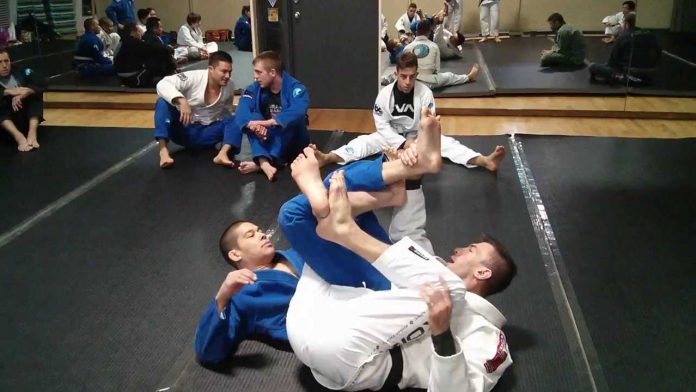
There’s a common thing with rolling Jiu-Jitsu attacks across all academies in the world. Well, around most, at least. White belts try to do them every chance they get. Of course, they do the horrible job of doing anything but getting stuck. Most old-school black belts fringe at the sight of white belts (or most other students) attempting such moves. And purple and brown belt competitors who follow modern BJJ simply thrive with them. While this is not a situation common to all, it is a pretty usual one. And it shouldn’t be. Not for all rolling Jiu=Jitsu attacks.
The things that make white belts stuck like fish in a net are the same that make black belts cringe. Rolling Jiu-Jitsu attacks do not always work, even if black belts are performing them. The reason for this is that some attacks are far from high percentage moves. This, in turn, raises the question of which of the rolling attacks are worth your time? Well, the old BJJ mantra “when in doubt, go with basics” is the answer here.
While rolling attacks do seem impressive and cool, they also need to be effective. By effective, I mean land you in a better position than your starting one. The best outcome is getting a submission straight away, but this is not always possible. The key is in finding a balance between rolling and having a clear-cut purpose for doing so.
Rolling As An Attack
Rolling as an attack is not an easy thing to do. While there are some rolling Jiu-Jitsu attacks that really work, they’re not for beginners. So, white and blue belts, stay away from rolling attacks, at least for the time being.
The goal of a rolling attack is to help you get into a better position to finish and/or control your opponent. In order to achieve this, you’ll need to not only know what you want but how to roll precisely to get it. Rolling requires you to part from the ground completely at one point, which can easily be used against you. You have to have clear intentions and know the shortest route possible.
As far as positions from where you can roll, surprisingly to some, you’re not restricted to the top, you can also use bottom positions for rolling Jiu-Jitsu attacks, sometimes even more efficiently. Regardless of position, you need to know how to set your body up for the roll. Even more importantly, you need to know how and where to anchor yourself. Which is where the grips come in.
And finally, if you ever have a hope of mastering rolling Jiu-Jitsu attacks make sure you drill them. If you need to drill basic BJJ moves 10 000 times, you’ll need to double that for rolling attacks. So get to work!
Rolling Jiu-Jitsu Attacks
Rolling Jiu-Jitsu attacks are actually nothing any. They’re just another means to an end in BJJ. The roll itself does not do anything but get you into an improved position. You could even go as far as looking at it as just a step or hand placement that opens up more opportunities. The thing to remember is that you need to start from a position of stability and control. You also want to end up in a position of even better control and/or stability. If you manage to slap on submission while you’re rolling, good for you.
In order to make things easier for everyone looking into rolling Jiu-Jitsu attacks, we focus on “just” four of them. yes, “just four” attacks but each one as secure as reliable as the Rear Naked Choke is.
As interesting as rolling Jiu-Jitsu attacks are, make sure you master the basics first. Kurt Osiander is a great coach to teach you the basics in an unorthodox way. His “Fundamentals Of A Jiu-Jitsu Renegade” DVD instructional is full of great moves that are as attractive as rolling attacks, but way simpler to master.
Rolling Kimura
If there was ever a rolling BJJ attack that you could call “classic” it is the Kimura. This one is the most recognizable rolling attack from the top. the thing with the trolling Kimura is that it offers a lot more than just a Kimura position.
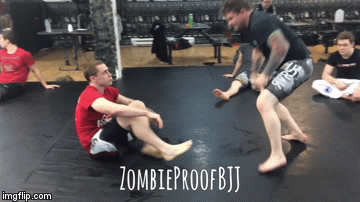
The aim with all rolling Jiu-Jitsu attacks is to finish as close as possible to your opponent. With the rolling Kimura, you get an opening to take the back, or transition into a North-South Kimura after the roll.
Rolling Back Take
The rolling back take is also a recognizable BJJ move. It is a great way of obtaining the back from side control, half guard, or the mount. It is also a surprising move that most opponents won’t be expecting. However, it is, arguably, the most complex of all the rolling Jiu-Jitsu attacks we’ll cover today.
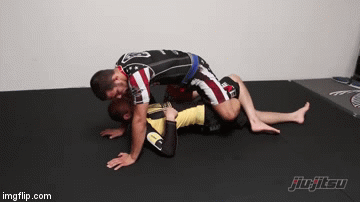
While this roll gets you straight into back control, you also have a great attacking checkpoint along the way. Right after you get your back on the mats, you’ll be in the track position. From there you can go for leg locks, neck cranks, or get to the back. If you go straight for the back, you’ll end up with a Rear Naked Choke directly most of the time.
Rolling Kneebar
The rolling kneebar is great as a takedown or even as the move from the bottom. From the feet, you can do it reactively, if an opponent gets behind. You can also do it proactively, and position your body so that you hunt for it. From the bottom, you can use a multitude of guards to get into position for such a roll.
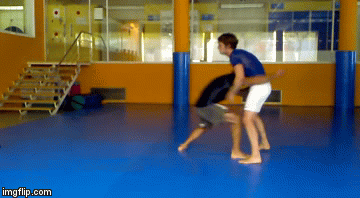
Rolling Guillotine
The rolling guillotine is one of those rolling Jiu-Jitsu attacks that have the wow factor. This is due to the fact that you need to be fast with it. It also has to do with the fact that you end up in the mount with a full-on choke.
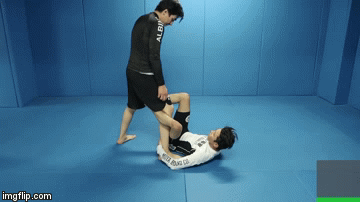


![Darce Choke Encyclopedia – Origins, Mechanics and Variations [2024] BJJ, choke, Brabo, BJJ Darce Choke, D'arce Choke, Darce BJJ Choke](https://bjj-world.com/wp-content/uploads/2017/11/JungPoirierLeeYahoo-218x150.jpg)








![Basic Closed Guard Jasmine Rocha DVD Review [2024] Basic Closed Guard Jasmine Rocha DVD Review](https://bjj-world.com/wp-content/uploads/2024/11/basic-closed-guard-jasmine-rocha-dvd-review-218x150.png)
![Don’t Stand Up Chris Wojcik DVD Review [2024] Don't Stand Up Chris Wojcik DVD Review](https://bjj-world.com/wp-content/uploads/2024/11/dont-stand-up-chris-wojcik-dvd-review-218x150.png)
![EMU Guard 2.0 Benjamin Power DVD Review [2024] EMU Guard 2.0 Benjamin Power DVD Review](https://bjj-world.com/wp-content/uploads/2024/11/emu-guard-2-0-benjamin-power-dvd-review-218x150.png)
![The Whole Omoplata Enchilada Lyanne Perez DVD Review [2024] The Whole Omoplata Enchilada Lyanne Perez DVD Review](https://bjj-world.com/wp-content/uploads/2024/11/whole-omoplata-enchilada-lyanne-perez-dvd-review-218x150.png)
![No-Gi Defense Xande Ribeiro DVD Review [2024] No-Gi Defense Xande Ribeiro DVD Review](https://bjj-world.com/wp-content/uploads/2024/11/no-gi-defense-xande-ribeiro-dvd-review-218x150.png)
![Mastering Takedown Prevention Steve Mocco DVD Review [2024] Mastering Takedown Prevention Steve Mocco DVD Review](https://bjj-world.com/wp-content/uploads/2024/11/mastering-takedown-prevention-steve-mocco-dvd-review-218x150.png)
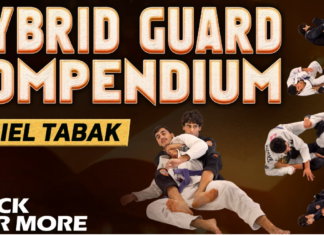



![Advanced Immortal Clinch Matt Brown DVD Review [2024] Advanced Immortal Clinch Matt Brown DVD Review](https://bjj-world.com/wp-content/uploads/2024/09/advanced-immortal-clinch-matt-brown-dvd-review-100x70.png)

![Double Sleeve Guard Jon Thomas BJJ DVD Review [2024] Double Sleeve Guard Jon Thomas BJJ DVD Review](https://bjj-world.com/wp-content/uploads/2024/10/double-sleeve-guard-jon-thomas-bjj-dvd-review-100x70.png)
![The Whole Omoplata Enchilada Lyanne Perez DVD Review [2024] The Whole Omoplata Enchilada Lyanne Perez DVD Review](https://bjj-world.com/wp-content/uploads/2024/11/whole-omoplata-enchilada-lyanne-perez-dvd-review-100x70.png)


![No-Gi Pressure Mastery JT Torres DVD Review [2024] No-Gi Pressure Mastery JT Torres DVD Review](https://bjj-world.com/wp-content/uploads/2024/10/no-gi-pressure-mastery-jt-torres-dvd-review-100x70.png)

![Jeff Glover DVD Bundle Review: Chokin’ Around With Uncle Jeff [2024] Jeff Glover DVD Bundle Review: Chokin' Around With Uncle Jeff](https://bjj-world.com/wp-content/uploads/2024/10/jeff-glover-dvd-bundle-review-chokin-around-100x70.png)
![Understanding The Distance On Top Gui Mendes DVD Review [2024] Understanding The Distance On Top Gui Mendes DVD Review](https://bjj-world.com/wp-content/uploads/2024/10/distance-on-top-gui-mendes-dvd-review-100x70.png)


![Compass Kneebar System Charles Harriott DVD Review [2024] Compass Kneebar System Charles Harriott DVD Review](https://bjj-world.com/wp-content/uploads/2024/11/compass-kneebar-system-charles-harriott-dvd-review-100x70.png)


![Feet Finder Foot Sweeps Christian Ozbek DVD Review [2024] Feet Finder Foot Sweeps Christian Ozbek DVD Review](https://bjj-world.com/wp-content/uploads/2024/09/feet-finder-foot-sweeps-christian-ozbek-dvd-review-100x70.png)


![Kill The Underhook Dima Murovanni DVD Review [2024] Kill The Underhook Dima Murovanni DVD Review](https://bjj-world.com/wp-content/uploads/2024/10/kill-the-underhook-dima-murovanni-dvd-review-100x70.png)





![Jeff Glover Deep Half Revolution DVD Bundle Review [2024] Jeff Glover Deep Half Revolution DVD Bundle Review](https://bjj-world.com/wp-content/uploads/2024/10/jeff-glover-deep-half-revolution-dvd-bundle-review-100x70.png)